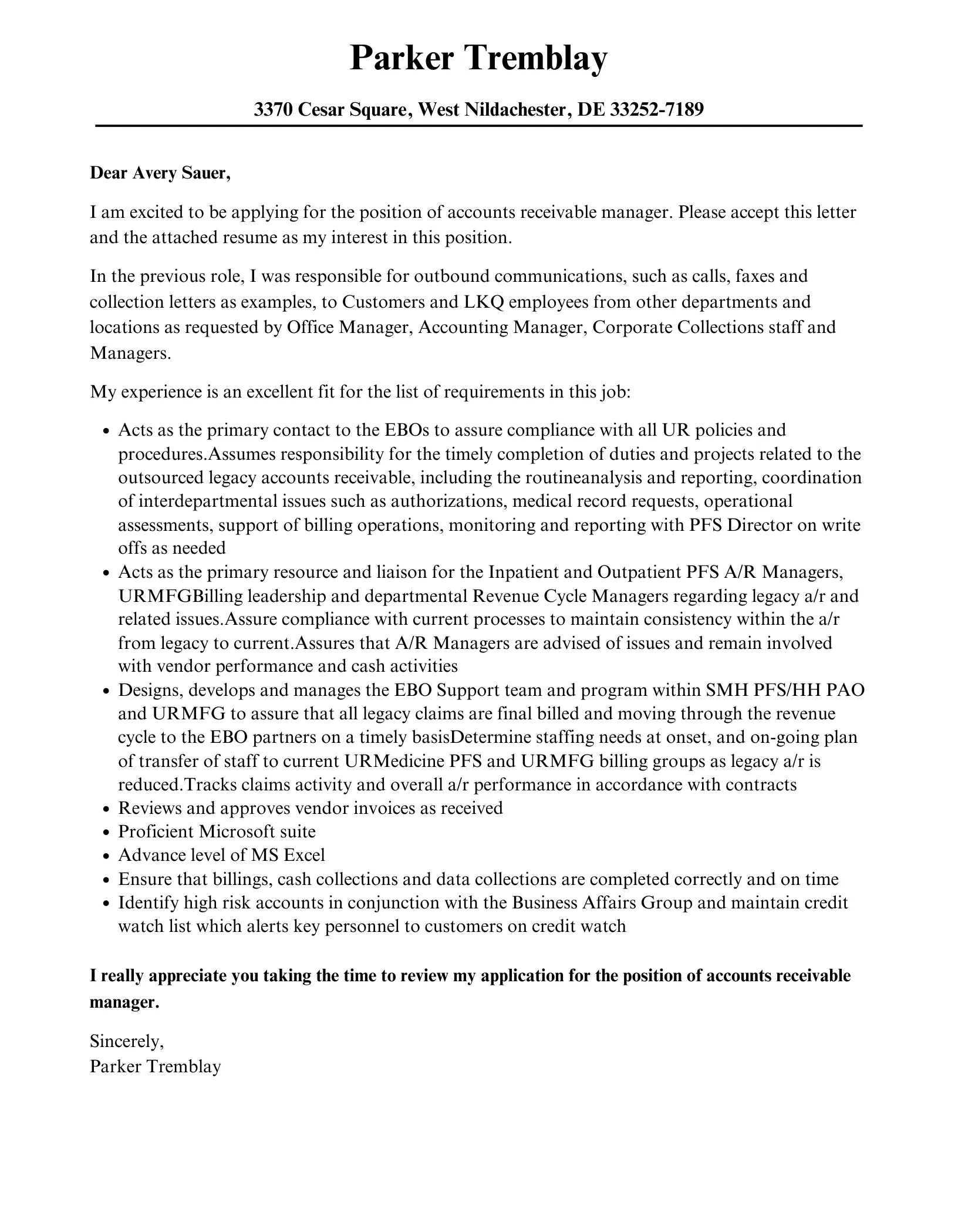Crafting a Compelling Accounts Receivable Cover Letter
An accounts receivable cover letter is a crucial document when applying for a job in the financial sector. It’s your first opportunity to make a positive impression on a potential employer, showcasing your skills, experience, and enthusiasm for the role. A well-crafted cover letter can significantly increase your chances of getting an interview. This guide provides a detailed walkthrough of creating an effective accounts receivable cover letter, helping you stand out from the competition and land your dream job. Learn how to structure your letter, highlight your skills, and avoid common pitfalls, ensuring your application makes a lasting impact. Consider it your roadmap to success, giving you the tools needed to confidently navigate the job application process.
Understanding the Accounts Receivable Role
Before you start writing your cover letter, it is essential to understand the key responsibilities and skills associated with an accounts receivable role. This understanding will allow you to tailor your letter and highlight the most relevant aspects of your experience. Demonstrating this knowledge will show employers you’re serious about the position and have the necessary qualifications to excel. Consider the daily tasks and the expected outcomes of your role. Then, be sure to provide clear examples that showcase you’re equipped with the right tools and techniques to be an ideal candidate.
Key Responsibilities
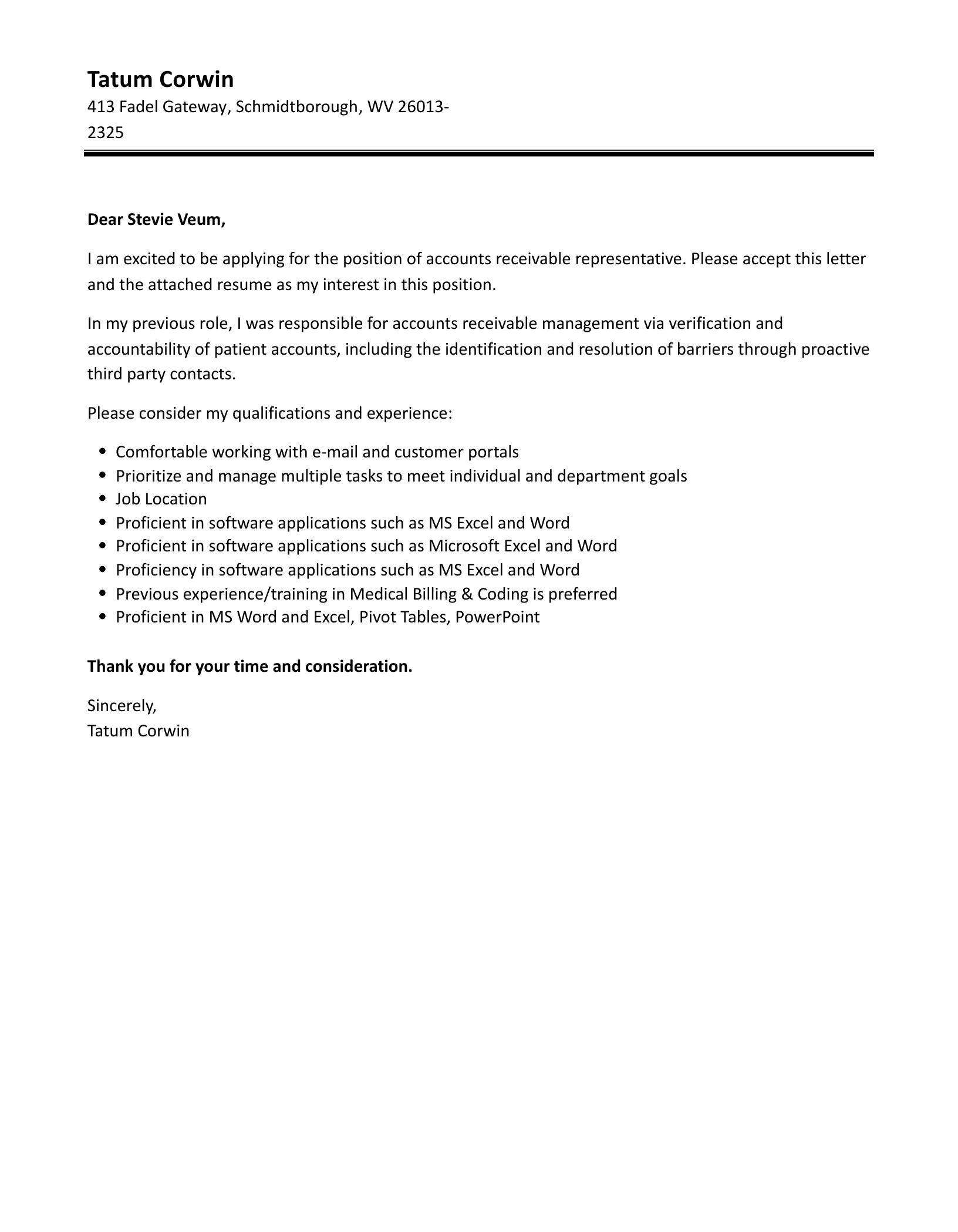
Accounts receivable professionals are responsible for a wide range of tasks. These include invoicing customers, managing payments, reconciling accounts, and following up on outstanding debts. They often handle customer inquiries, resolve billing issues, and maintain accurate financial records. Proficiency in these areas is crucial for ensuring efficient cash flow and maintaining positive customer relationships. Moreover, they must adhere to accounting principles and company policies. Your cover letter should highlight your experience in these areas, demonstrating your ability to handle these responsibilities effectively.
Essential Skills
Successful accounts receivable candidates possess a unique combination of skills. Strong attention to detail is paramount for maintaining accurate records and preventing errors. Proficiency in accounting software, such as QuickBooks or SAP, is also critical. Excellent communication skills, both written and verbal, are necessary for interacting with customers and resolving disputes. Problem-solving skills are essential for identifying and addressing billing issues and other discrepancies. Highlight these skills in your cover letter, providing specific examples of how you have utilized them in previous roles. Also be sure to showcase organizational skills, as these will help you manage multiple priorities, ensure deadlines are met, and maintain a high degree of efficiency.
Structuring Your Cover Letter
A well-structured cover letter is easy to read and highlights your key qualifications effectively. It should follow a standard format, including a header with your contact information, a professional greeting, an opening paragraph, body paragraphs, and a closing. Each section serves a specific purpose, guiding the reader through your skills, experience, and enthusiasm for the role. By structuring your letter in a logical manner, you can ensure that the hiring manager quickly understands why you’re the right fit. A clear structure will increase the likelihood of your application being considered.
Header and Contact Information

Your cover letter should begin with a header that includes your full name, address, phone number, and email address. You should also include the date and the hiring manager’s name and title, if known, along with the company’s name and address. This information ensures the recruiter can easily contact you. Double-check your contact details for accuracy to avoid any missed opportunities. Make it a clean and professional presentation.
Professional Greeting
Address the hiring manager by name if possible. Research the company or check the job posting for a contact name. If a specific name isn’t available, a general greeting like “Dear Hiring Manager” is appropriate. A personalized greeting shows that you’ve taken the time to learn about the company and the role. This simple step adds a layer of professionalism to your letter and indicates your genuine interest in the position.
Opening Paragraph
The opening paragraph should state the position you’re applying for and how you learned about it. Briefly mention why you are interested in the role and the company. This is your opportunity to grab the hiring manager’s attention and make them want to read more. Be clear, concise, and enthusiastic. Express your initial excitement about the job. In this paragraph, you want to show why you are the ideal candidate from the start, making the reader want to read the entire letter.
Body Paragraphs

The body paragraphs are where you showcase your skills, experience, and achievements. Use these sections to highlight your qualifications in detail, providing specific examples to demonstrate your abilities. Tailor your content to match the requirements of the job posting. Provide specific examples of your success, using numbers and results whenever possible. Use this section to show, not just tell, the hiring manager what you can do. This part of the cover letter provides the most important details.
Highlighting Relevant Experience
Focus on the experience most relevant to the accounts receivable role. Describe your previous positions, focusing on the responsibilities and accomplishments that align with the job description. Quantify your achievements whenever possible. For example, mention how you reduced outstanding invoices by a certain percentage or improved the efficiency of the billing process. Use action verbs to describe your duties and accomplishments. For instance, instead of saying you “worked with” accounts, say that you “managed” or “oversaw” them. Provide concrete examples of successes in the workplace.
Showcasing Key Skills
Identify the key skills required for the position and provide specific examples of how you have demonstrated those skills in previous roles. Refer to the job description and align your skills with the employer’s requirements. For instance, if the job requires proficiency in a specific accounting software, mention your experience with it. If the job requires excellent communication skills, provide an example of a time you resolved a customer dispute. Tailor your letter to highlight your strengths and the skills most valued by the employer.
Quantifying Achievements
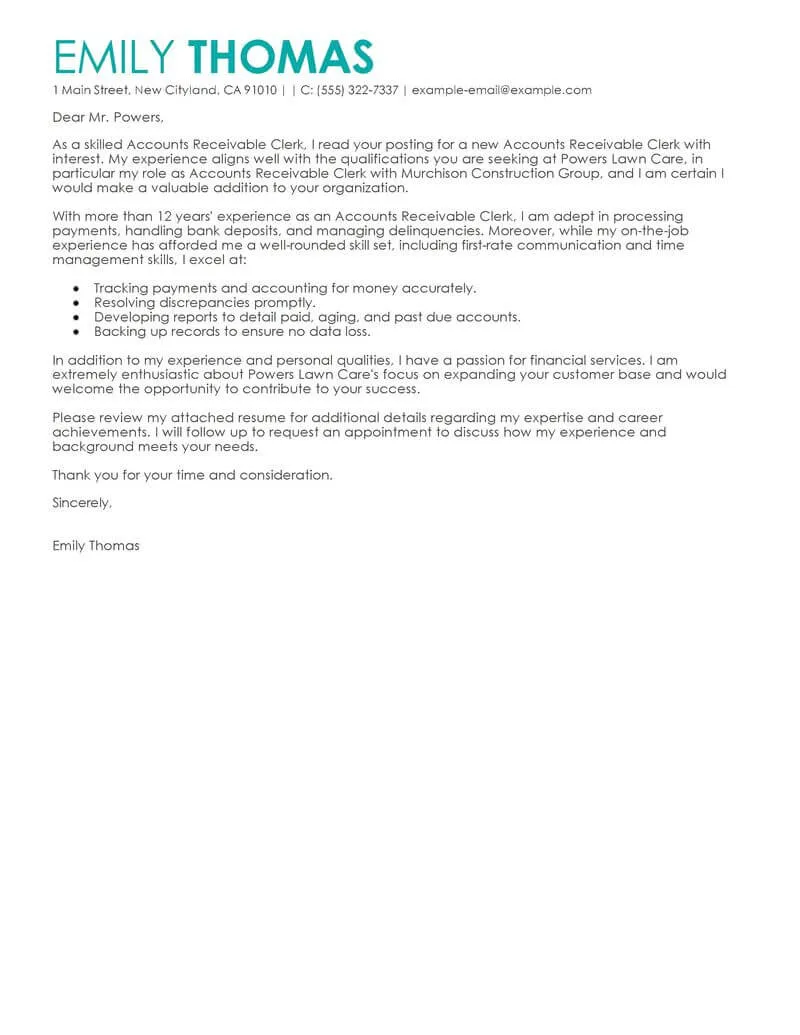
Whenever possible, quantify your achievements to demonstrate the impact you’ve made in previous roles. Use numbers and metrics to illustrate your successes. For example, state that you reduced the average days sales outstanding (DSO) by a certain percentage, or that you successfully managed a large portfolio of accounts. Quantifiable results make your accomplishments more credible and demonstrate your value to the employer. Include specifics about how you contributed to each previous employer.
Closing the Letter
The closing paragraph should express your enthusiasm for the role and reiterate your interest in the company. Include a call to action, such as inviting the hiring manager to contact you for an interview. Keep your closing concise and professional, and thank the hiring manager for their time and consideration. This ensures you leave a lasting positive impression, making it more likely for the hiring manager to remember you and consider your application favorably.
Expressing Enthusiasm and Availability
Reiterate your enthusiasm for the role and the company. Express your desire to contribute to the team and the organization’s success. State your availability for an interview and provide your contact information once more. Showing enthusiasm leaves a lasting impression. Demonstrate that you are eager to learn more about the opportunity and discuss your qualifications further. Make yourself available to connect with the hiring team.
Formal Closing and Signature
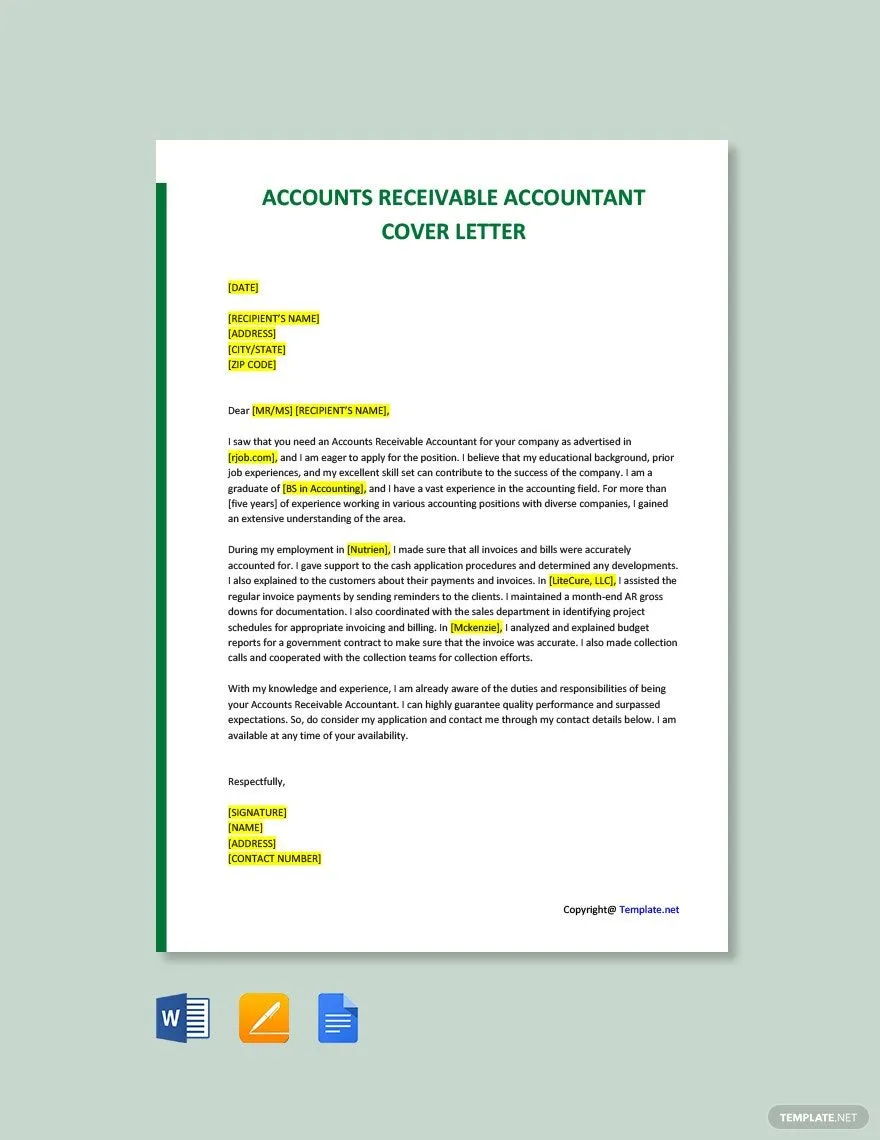
Use a formal closing, such as “Sincerely” or “Respectfully,” followed by your typed name. If submitting a hard copy, leave space for your signature above your typed name. A professional closing and signature add a touch of professionalism to your cover letter, reinforcing your commitment to the role. Make sure your name is clearly visible. Your signature will complete your application and show that you’re dedicated and available.
Proofreading and Editing
Proofreading and editing are crucial steps in ensuring your cover letter is free of errors. A cover letter with typos or grammatical mistakes reflects poorly on your attention to detail and professionalism. It’s vital to proofread your letter carefully and have someone else review it as well. Review the letter multiple times to catch all the details and to be sure that you have not omitted any information. Proofreading will ensure that your content is clear and concise.
Common Mistakes to Avoid
Avoid these common mistakes to ensure your cover letter makes a positive impression. These errors can undermine your application and reduce your chances of getting an interview. Take the time to revise your letter and avoid these pitfalls, significantly increasing the likelihood of your application being considered.
Typos and Grammatical Errors
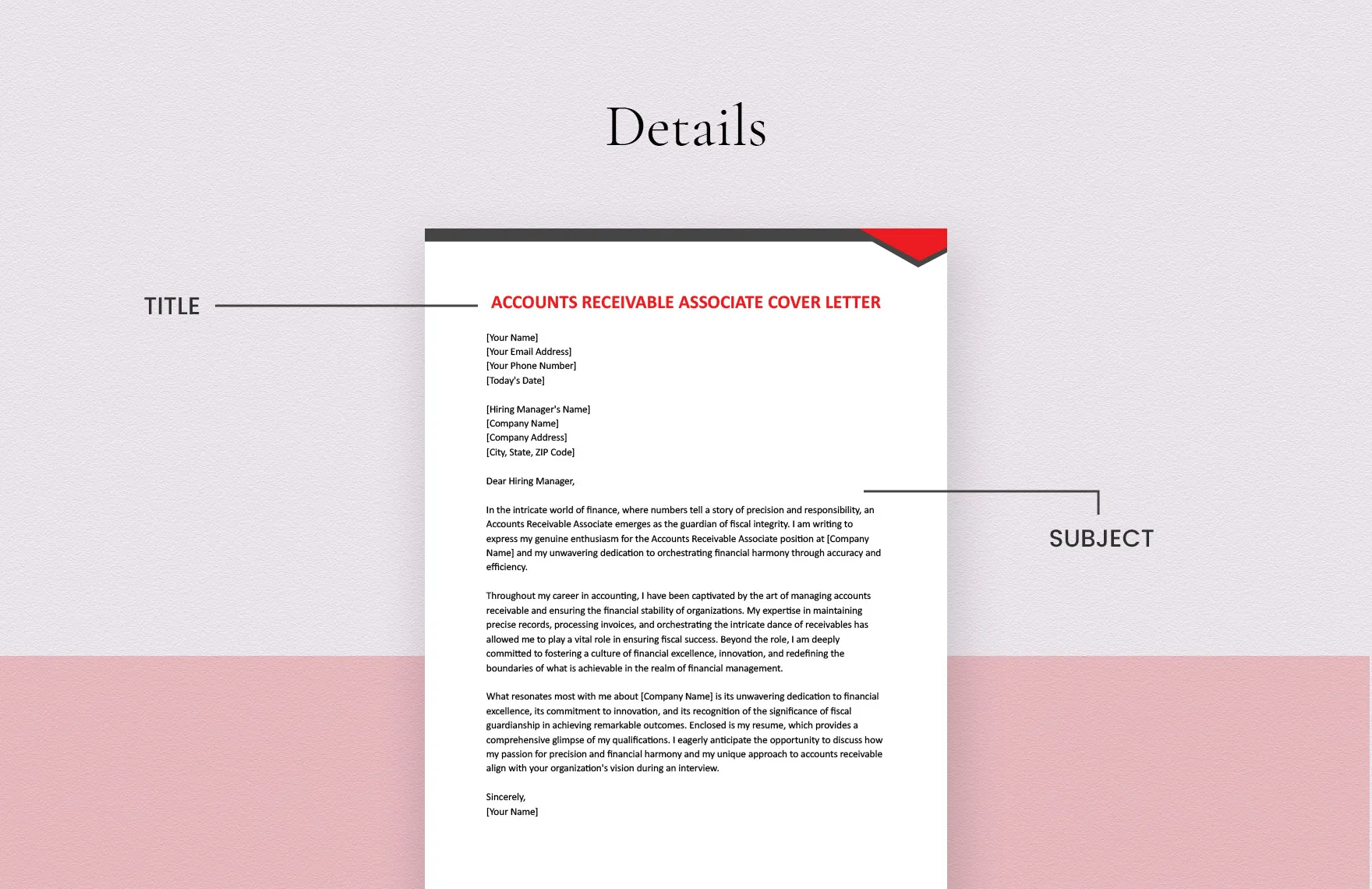
Typos and grammatical errors can undermine your credibility and demonstrate a lack of attention to detail. Proofread your cover letter carefully, using spell-check and grammar-check tools. Ask someone else to review it for any mistakes you may have missed. Even minor errors can create a negative impression. Ensure that the letter is free of mistakes. This part is important, as hiring managers are looking for someone who can catch minor issues, which is part of the job.
Generic Language
Avoid using generic, cookie-cutter phrases that could apply to any job. Tailor your cover letter to the specific role and company. Show that you understand the job requirements and have the relevant skills and experience. Make your cover letter unique. Use personalized content, rather than stock phrases, to make your application stand out. Generic language often makes your letter unmemorable.
Lack of Customization
Don’t submit a generic cover letter to multiple companies. Research each company and tailor your letter to address their specific needs and values. Show that you understand their business and are genuinely interested in working for them. A customized cover letter demonstrates your interest and commitment to the position. Customize your letter to demonstrate your enthusiasm about the specific company and role.
Accounts Receivable Cover Letter Example
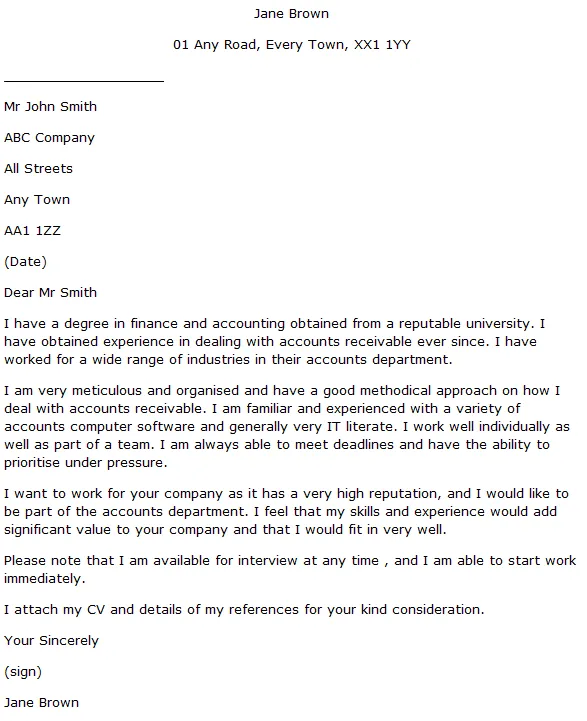
Below is a sample accounts receivable cover letter that you can use as a reference when crafting your own. This example demonstrates the structure, tone, and content elements discussed in this guide. Tailor this template to reflect your personal experience, skills, and achievements. Remember, your goal is to create a personalized letter that highlights your strengths and makes you stand out. Review the example and modify the components to your application.
Example Cover Letter Structure
The example cover letter follows the standard structure: header with contact information, a professional greeting, an opening paragraph, body paragraphs highlighting relevant experience and skills, and a closing. Review each section to see how the different elements are integrated. It’s critical to keep your letter simple and easy to follow. The example provides a clear roadmap for creating your own cover letter. You will also want to be sure to incorporate the advice in the previous sections.
Contact Information Section
Your contact information should be at the top of the letter, including your name, address, phone number, and email address. Include the date and the hiring manager’s name and title, along with the company’s name and address. This ensures the recruiter knows how to contact you. Check to make sure all details are correct. Your personal details will be clearly visible.
Opening Paragraph
Start by stating the position you’re applying for and how you learned about it. Briefly mention why you’re interested in the role and the company. Grab the hiring manager’s attention. Make them want to learn more about you. Show them that you are the right candidate for the job from the start. State what position you’re applying for, and express your interest in the role.
Experience and Skills Section
Highlight your relevant experience and skills in the body paragraphs. Provide specific examples and quantify your achievements whenever possible. Include past positions and use action verbs. Focus on what you’ve achieved in the past. Quantify your achievements to show the hiring manager the value you can provide to the company. Show them that you are the best candidate.
Closing Paragraph
Express your enthusiasm for the role and the company, and reiterate your interest. Include a call to action, such as inviting the hiring manager to contact you for an interview. Thank the hiring manager for their time. Leave a positive impression. Provide your contact information. The final impression is what the hiring manager will remember.
Modifying the Example
Use the example as a template. Tailor it to your specific qualifications and the requirements of the job. Customize the content. It is crucial to adapt the example to showcase your skills and experience. Use it as a guide, not a rigid template, to effectively present your qualifications.
Tailoring the Letter to the Job
Carefully review the job description. Identify the key requirements and skills. Modify the example to highlight how your experience and skills align with the job requirements. Make your cover letter as specific to the job as possible. Tailor your letter to suit each individual job.
Emphasizing Specific Skills
Focus on the skills most relevant to the job. Provide examples of how you’ve demonstrated those skills in previous roles. Include specific accomplishments. Tailor the letter to the requirements. Be sure to highlight how your skills and past experiences match what the employer is looking for.
